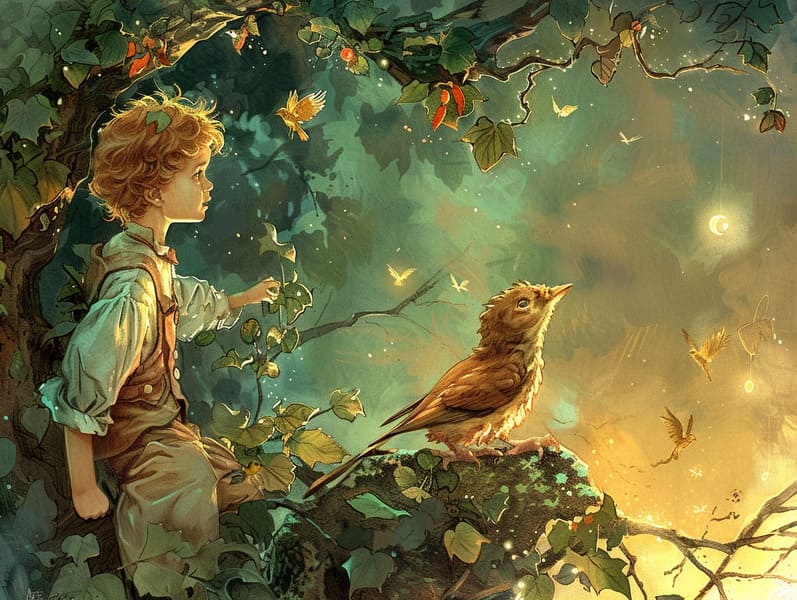Delving into the Background of Traditional Fairy Tales with Their Persistent Beauty.
Delving into the Background of Traditional Fairy Tales with Their Persistent Beauty.
Blog Article

Traditional fairy tales have long histories. These tales have been passed down from one generation to the next ages before they were ever put on paper. They originated from a variety of traditions, including Western traditions. They were initially disseminated among older generations, often carrying themes and messages concerning the societal norms and beliefs of the time.
The Grimm brothers, Jacob and Wilhelm Grimm, were among the first to gather many of these beloved tales. Their collection, "Grimm's Story Collection," included classics like "The Story of Cinderella," "Little Brother and Little Sister," and "Little Snow White," which have since become classics in the world of timeless fairy tales. Similarly, Hans Christian Andersen's whimsical fairy tales, such as "The Sea Maid," and "The Duckling that Could," have captivated hearts worldwide, solidifying their place in the pantheon of beloved fairy tales.
Despite their ancient origins, classic fairy tales remain as significant as ever, especially as kids' bedtime tales. These delightful tales are now available in numerous formats, including richly illustrated books, whimsical animations, and free fairy tales online.
Their continued relevance can be attributed to several charming aspects:
Crucial Morals: Timeless fairy tales often teach important moral lessons. Stories like "The Tale of the Boy Who Cried Wolf" teach the importance of integrity, while "The Hare and the Tortoise" illustrate the traits of perseverance and unassuming nature. These stories offer young readers clear distinctions between truth and falsehood, shaping their moral compass in a kind yet significant way.
Compassion and Knowledge: Ancient fairy tales frequently include personalities facing obstacles and hardships, urging children to sympathize with their struggles and back their triumphs. For instance, "Beauty's Beast" demonstrates the benefit of seeing beyond the surface to perceive the inner being of a being, building insight and perception.
Cultural Insights: Many ancient fairy tales are deeply ingrained in the cultural contexts from which they emerged. Learning from these fairy tales can provide enlightening views into different social structures, promoting a sense of world appreciation and knowledge.
Fantasy and Imagination: The supernatural elements in traditional fairy tales—wizardry and magic—kindle children’s dreams. These tales transport readers to imaginary realms, motivating imaginative dreams and this site a sense of marvel that persists a lifetime.
Classic fairy tales are not only fantastical but also educational. They function as delightful tools in nurturing various brain and heart skills in children. When classic fairy tales are narrated, they promote linguistic abilities by teaching new language items and complex sentence structures. This practice also enhances listening abilities and attentiveness, as kids pay close attention, anticipating to see what happens next.
Furthermore, deliberating the themes and characters of traditional fairy tales can cultivate thought processes and logical thinking. Young ones are taught to discover patterns, guess what will happen, and grasp cause and effect. These explorations also encourage kids speak out their thoughts and feelings, boosting their emotional intelligence.
In today’s digital age, the accessibility of digital storybooks has made these stories more within reach than ever. Websites and online apps provide large libraries of bedtime fairy tales that can be read or listened to anytime, anywhere. Fairy tales read aloud are particularly in demand, extending an engaging way for little ones to savor these spellbinding stories. Spoken stories and read-out-loud stories lead characters and settings to life, often joined by mesmerizing background sounds and songs that improve the tale journey.
The unending appeal of traditional fairy tales lies in their ability to adapt to today's world while sustaining their key morals. Contemporary modernizations of these fairy tales often show more diverse characters and modern settings, making them pertinent to today’s audience. However, the main ideas of guts, charity, and righteousness remain unchanged, continuing to influence listeners of all ages.
Ancient fairy tales also offer a sense of peace and knowability. They yield a neat narrative with a apparent beginning, middle, and end, often finishing with the culmination of conflicts and the triumph of truth over falsehood. This certainty can be soothing for young readers, allowing a sense of unchangeability in an constantly changing world.
Ancient fairy tales continue to enchant and enlighten new generations, maintaining their majesty and applicability in modern society. As children's night stories, they bring a perfect blend of magic and knowledge, facilitating moral values, empathy, and creativity. The prevalence of digital fairy tales and the in demand status of fairy tales narrated confirm that these timeless stories remain obtainable to new generations.
By defending and relating these stories, we continue to revere the rich tapestry of mythology and cultural heritage. Whether you are viewing a artistically illustrated book, accessing a electronic library, or listening on an voice book, the radiance of timeless fairy tales is always within reach. These narratives demonstrate of the eternal influence of stories and its ability to join us across time and space.
No matter if you are exploring a gorgeously illustrated book, browsing a electronic collection, or listening on an read-aloud book, the wonder of children's fairy tales is always within reach.
These fairy tales teach us of the consistent essence of tales and its ability to unify us across epochs and places, casting a charm that charms and informs alike.